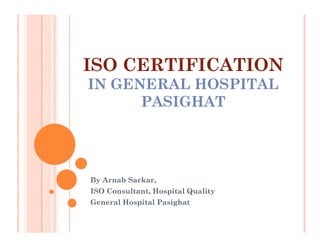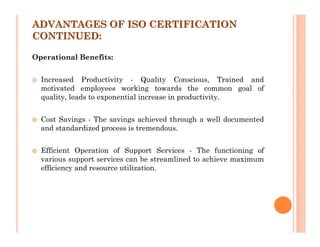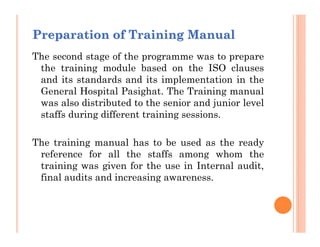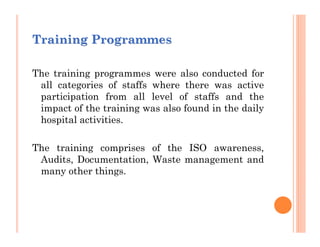1) The General Hospital in Pasighat, Arunachal Pradesh began an initiative to obtain ISO certification in June 2009 with support from various organizations.
2) An assessment was conducted of the hospital's operations and documentation to identify gaps against ISO standards. Training manuals and programs were developed to educate staff.
3) Key positions like Management Representative and Document Controller were appointed to lead the certification process. Documentation was developed at four levels - a quality manual, procedures, work instructions, and forms/registers.
4) Implementation involved standardizing processes, improving signage and communication, enhancing medical storage, implementing biomedical waste management, and reorganizing medical records. Photos show improvements made across various areas.



























